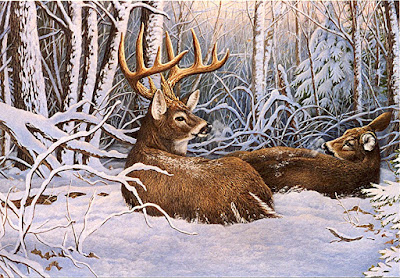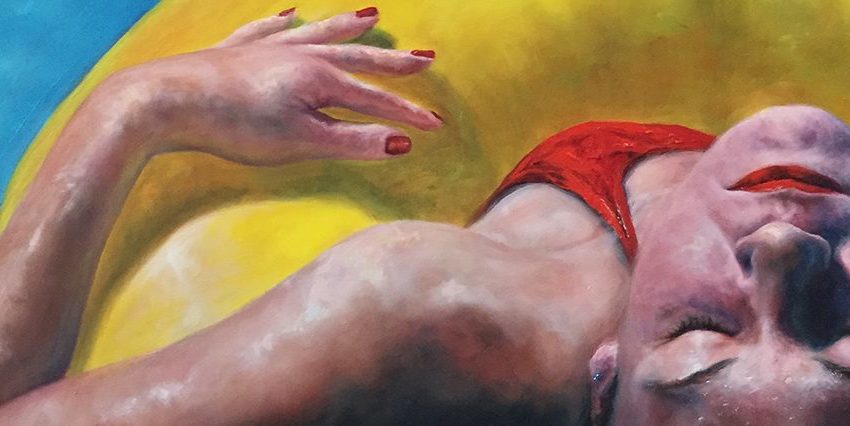Summary

Some of the earliest of all known art (pre-historic cave and rock art) feature wildlife. However, it might be more properly regarded as art about food, rather than art about wildlife as such.
Then for a lot of the rest of the history of art in the western world, art depicting wildlife was mostly absent, due to the fact that art during this period was mostly dominated by narrow perspectives on reality, such as religions. It is only more recently, as society, and the art it produces, frees itself from such narrow world-views, that wildlife art flourishes.
Wildlife is also a difficult subject for the artist, as it is difficult to find and even more difficult to find keeping still in a pose, long enough to even sketch, let alone paint. Recent advances such as photography have made this far easier, as well as being artforms in their own right. Wildlife art is thus now far easier to accomplish both accurately and aesthetically.
In art from outside the western world, wild animals and birds have been portrayed much more frequently throughout history.
Art about wild animals began as a depiction of vital food-sources, in pre-history. At the beginnings of history the western world seems to have shut itself off from the natural world for long periods, and this is reflected in the lack of wildlife art throughout most of art history. More recently, societies, and the art it produces, have become much more broad-minded. Wildlife has become something to marvel at as new areas of the world were explored for the first time, something to hunt for pleasure, to admire aesthetically, and to conserve. These interests are reflected in the wildlife art produced.
The History and development of Wildlife Art…
Wildlife art in Pre-history.
Animal and bird art appears in some of the earliest known examples of artistic creation, such as cave paintings and rock art
The earliest known cave paintings were made around 40,000 years ago, the Upper Paleolithic period. These art works might be more than decoration of living areas as they are often in caves which are difficult to access and don’t show any signs of human habitation. Wildlife was a significant part of the daily life of humans at this time, particularly in terms of hunting for food, and this is reflected in their art. Religious interpretation of the natural world is also assumed to be a significant factor in the depiction of animals and birds at this time.
Probably the most famous of all cave painting, in Lascaux (France), includes the image of a wild horse, which is one of the earliest known examples of wildlife art. Another example of wildlife cave painting is that of reindeer in the Spanish cave of Cueva de las Monedas, probably painted at around the time of the last ice-age. The oldest known cave paintings (maybe around 32,000 years old) are also found in France, at the Grotte Chauvet, and depict horses, rhinoceros, lions, buffalo, mammoth and humans, often hunting.
Wildlife painting is one of the commonest forms of cave art. Subjects are often of large wild animals, including bison, horses, aurochs, lions, bears and deer. The people of this time were probably relating to the natural world mostly in terms of their own survival, rather than separating themselves from it.
Cave paintings found in Africa often include animals. Cave paintings from America include animal species such as rabbit, puma, lynx, deer, wild goat and sheep, whale, turtle, tuna, sardine, octopus, eagle, and pelican, and is noted for its high quality and remarkable color. Rock paintings made by Australian Aborigines include so-called “X-ray” paintings which show the bones and organs of the animals they depict. Paintings on caves/rocks in Australia include local species of animals, fish and turtles.
Animal carvings were also made during the Upper Paleolithic period… which constitute the earliest examples of wildlife sculpture.
In Africa, bushman rock paintings, at around 8000 BC, clearly depict antelope and other animals.
The advent of the Bronze age in Europe, from the 3rd Millennium BC, led to a dedicated artisan class, due to the beginnings of specialization resulting from the surpluses available in these advancing societies. During the Iron age, mythical and natural animals were a common subject of artworks, often involving decoration of objects such as plates, knives and cups. Celtic influences affected the art and architecture of local Roman colonies, and outlasted them, surviving into the historic period.
Wildlife Art in the Ancient world (Classical art).
History is considered to begin at the time writing is invented. The earliest examples of ancient art originate from Egypt and Mesopotamia.
The great art traditions have their origins in the art of one of the six great ancient “classical” civilizations: Ancient Egypt, Mesopotamia, Greece, Rome, India, or China. Each of these great civilizations developed their own unique style of art.
Animals were commonly depicted in Chinese art, including some examples from the 4th Century which depict stylized mythological creatures and thus are rather a departure from pure wildlife art. Ming dynasty Chinese art features pure wildlife art, including ducks, swans, sparrows, tigers, and other animals and birds, with increasing realism and detail.
In the 7th Century, Elephants, monkeys and other animals were depicted in stone carvings in Ellora, India. These carvings were religious in nature, yet depicted real animals rather than more mythological creatures.
Ancient Egyptian art includes many animals, used within the symbolic and highly religious nature of Egyptian art at the time, yet showing considerable anatomical knowledge and attention to detail. Animal symbols are used within the famous Egyptian hieroglyphic symbolic language.
Early South American art often depicts representations of a divine jaguar.
The Minoans, the greatest civilization of the Bronze Age, created naturalistic designs including fish, squid and birds in their middle period. By the late Minoan period, wildlife was still the most characteristic subject of their art, with increasing variety of species.
The art of the nomadic people of the Mongolian steppes is primarily animal art, such as gold stags, and is typically small in size as befits their traveling lifestyle.
Aristotle (384-322 BC) suggested the concept of photography, but this wasn’t put into practice until 1826.
The Medieval period, AD 200 to 1430
This period includes early Christian and Byzantine art, as well as Romanesque and Gothic art (1200 to 1430). Most of the art which survives from this period is religious, rather than realistic, in nature. Animals in art at this time were used as symbols rather than representations of anything in the real world. So very little wildlife art as such could be said to exist at all during this period.
Renaissance wildlife art, 1300 to 1602.
This arts movement began from ideas which initially emerged in Florence. After centuries of religious domination of the arts, Renaissance artists began to move more towards ancient mystical themes and depicting the world around them, away from purely Christian subject matter. New techniques, such as oil painting and portable paintings, as well as new ways of looking such as use of perspective and realistic depiction of textures and lighting, led to great changes in artistic expression.
The two major schools of Renaissance art were the Italian school who were heavily influenced by the art of ancient Greece and Rome, and the northern Europeans… Flemish, Dutch and Germans, who were generally more realistic and less idealized in their work. The art of the Renaissance reflects the revolutions in ideas and science which occurred in this Reformation period.
The early Renaissance features artists such as Botticelli, and Donatello. Animals are still being used symbolically and in mythological context at this time, for example “Pegasus” by Jacopo de’Barbari.
The best-known artist of the high Renaissance is Leonardo-Da-Vinci. Although most of his artworks depict people and technology, he occasionally incorporates wildlife into his images, such as the swan in “Leda and the swan”, and the animals portrayed in his “lady with an ermine”, and “studies of cat movements and positions”.
Durer is regarded as the greatest artist of the Northern European Renaissance. Albrecht Durer was particularly well-known for his wildlife art, including pictures of hare, rhinoceros, bullfinch, little owl, squirrels, the wing of a blue roller, monkey, and blue crow.
Baroque wildlife art, 1600 to 1730.
This important artistic age, encouraged by the Roman Catholic Church and the aristocracy of the time, features such well-known great artists as Caravaggio, Rembrandt, Rubens, Velazquez, Poussin, and Vermeer. Paintings of this period often use lighting effects to increase the dramatic effect.
Wildlife art of this period includes a lion, and “goldfinch” by Carel Fabrituis.
Melchior de Hondecoeter was a specialist animal and bird artist in the baroque period with paintings including “revolt in the poultry coup”, “cocks fighting” and “palace of Amsterdam with exotic birds”.
The Rococo art period was a later (1720 to 1780) decadent sub-genre of the Baroque period, and includes such famous painters as Canaletto, Gainsborough and Goya. Wildlife art of the time includes “Dromedary study” by Jean Antoine Watteau, and “folly of beasts” by Goya.
Jean-Baptiste Oudry was a Rococo wildlife specialist, who often painted commissions for royalty.
Some of the earliest scientific wildlife illustration was also created at around this time, for example from artist William Lewin who published a book illustrating British birds, painted entirely by hand.
